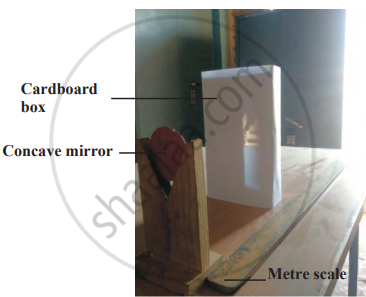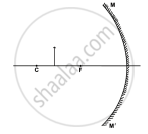1. Aim: To study the images formed by a concave mirror for different object distances.
2. Requirements: concave mirror, candle or lamp, cardboard box with an arrow-shaped slit, screen (white paper on cardboard), meter scale, wooden block.
3. Procedure
- Set up the cardboard box with the arrow-shaped slit as a light source.
- Place the mirror vertically in a cardboard box and align it with the meter scale at the 0 mark.
- In a dark room, position the light source between the mirror and the screen. Ensure the distance between the source and mirror is slightly more than the focal length.
- Move the screen along the meter scale until a clear image of the source is formed. Observe the image: it is inverted, real, and larger than the source.
- Move the light source further away from the mirror to a distance greater than twice the focal length. Adjust the screen to get a clear image. This time, the image is inverted, real, and smaller than the source.
- Measure the distances for each case using the meter scale.

Images formed by a plane mirror
4. Conclusion: The experiment demonstrates how a concave mirror forms real and inverted images of varying sizes, depending on the object's distance relative to the mirror's focal length.


